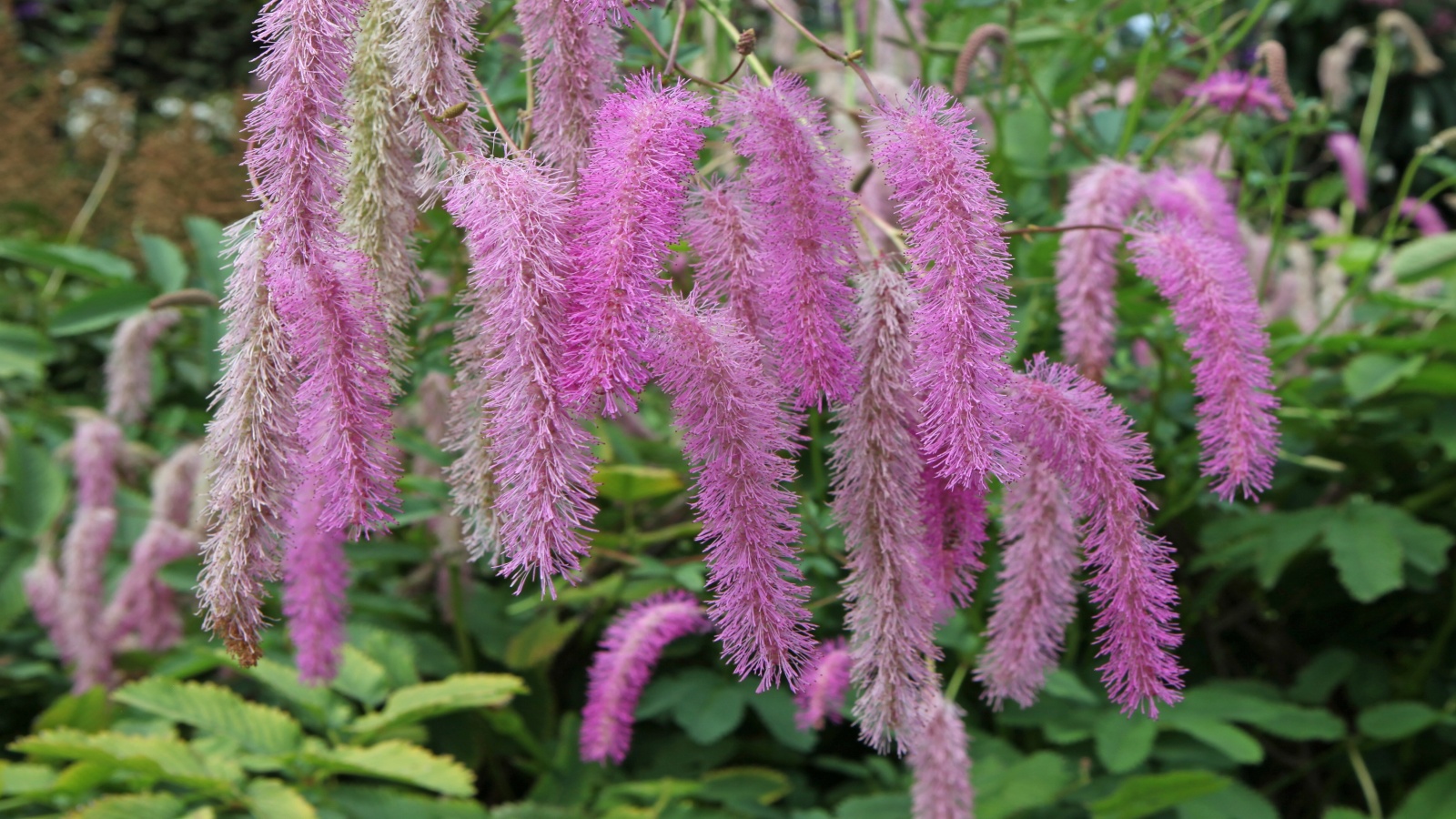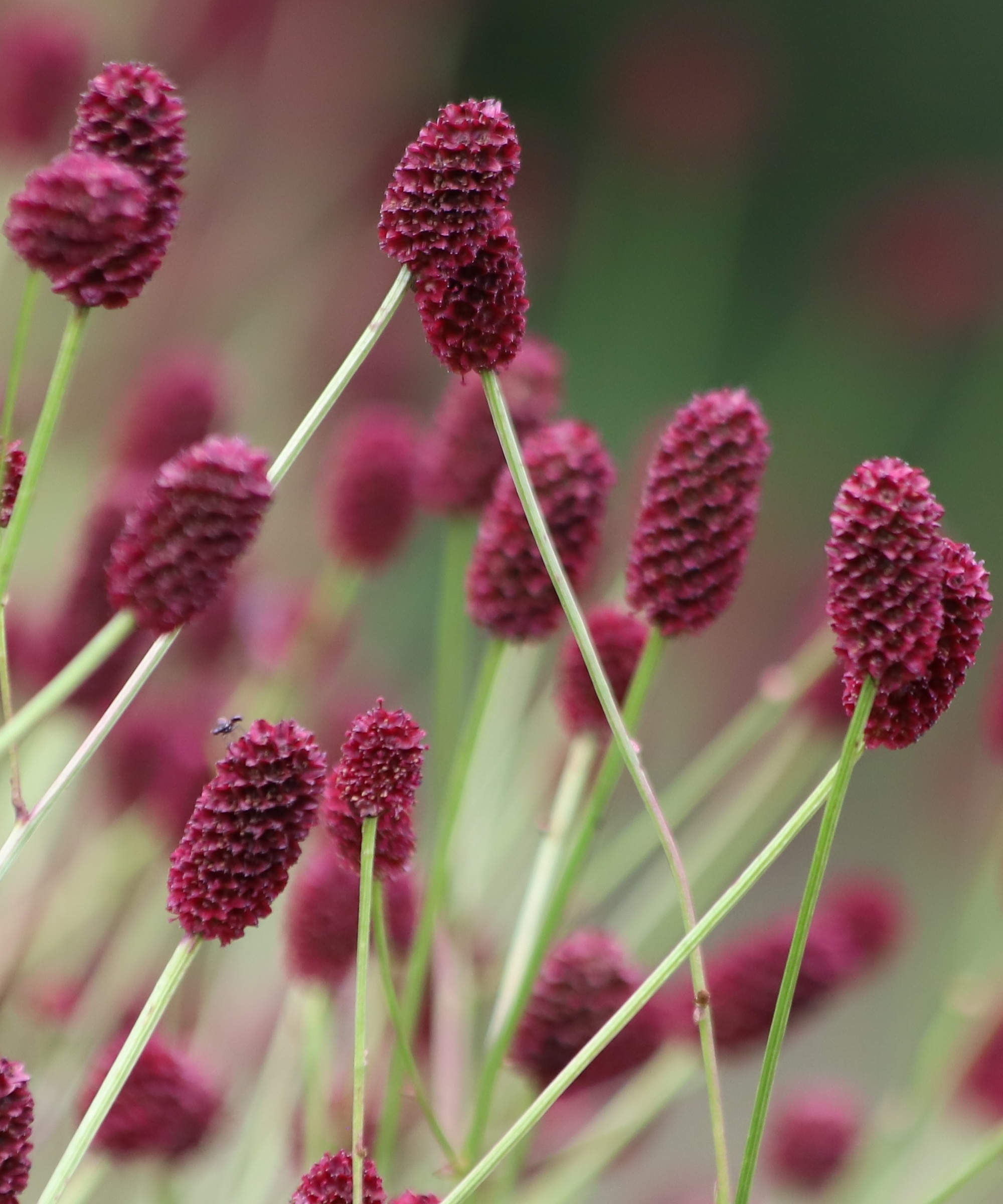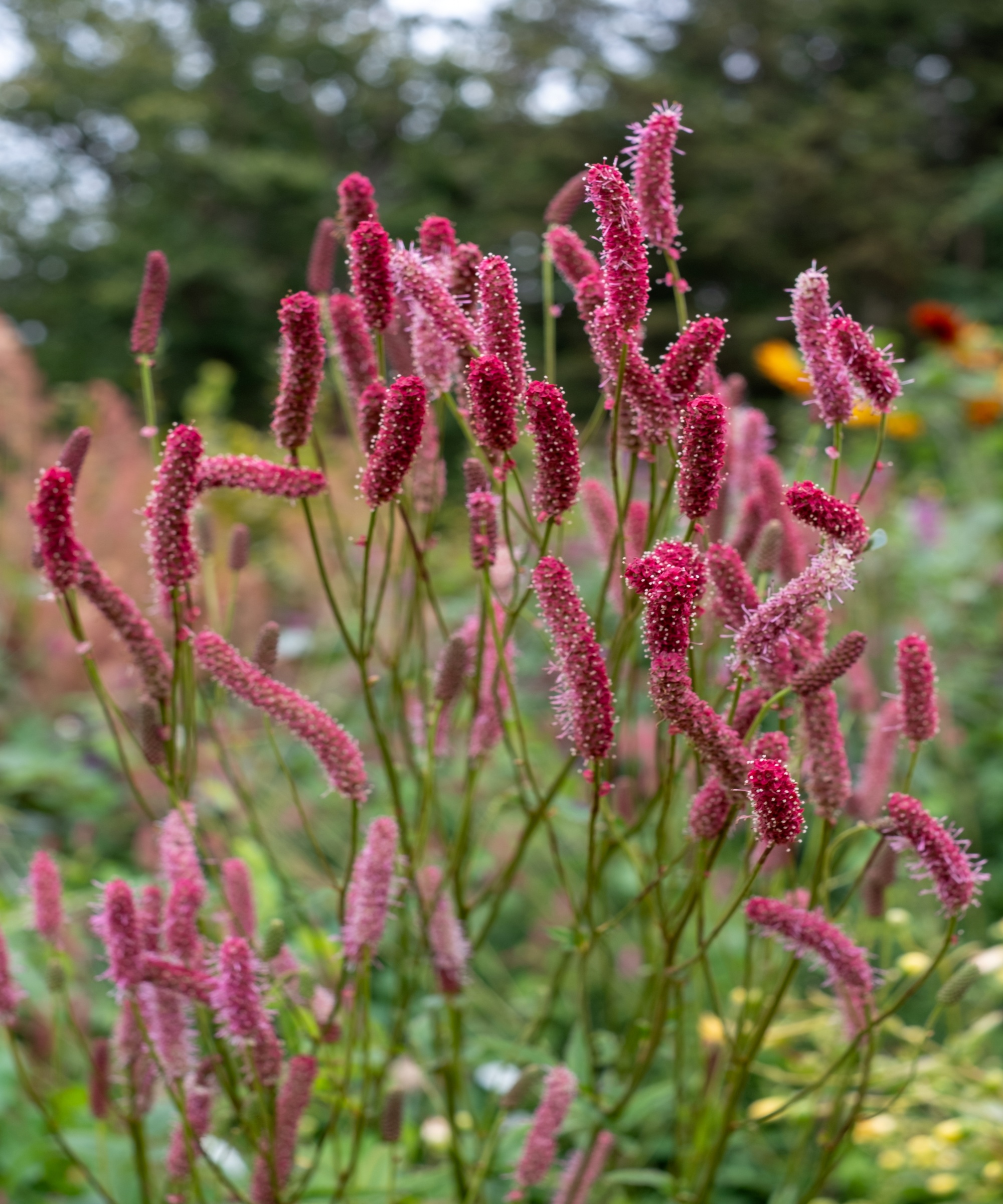How to grow sanguisorba – to add ethereal beauty and winter interest to your yard
Everything you need to know about growing this low-maintenance yet beautiful hardy perennial


Sanguisorba is having something of a moment thanks to the on-going garden trend for naturalistic and prairie planting.
It is a wide-ranging perennial member of the rose family that bears its flowers on airy stems held above clumps of attractively serrated foliage. Its common name is ‘burnet’ and it is an ideal companion for ornamental grasses such as stipa, miscanthus and deschampsia, as well as Verbena bonariensis, echinacea, sneezeweed and achillea.
When looking for a natural, low-maintenance ideas for borders and containers, learning how to grow sanguisorba would definitely be worthwhile. The flowers vary from small bobbly blooms to flamboyant bottlebrush-shaped tails, in colors ranging from white to deepest maroon. They are at their best in late summer and the fall, adding interest to the yard when other plants are starting to fade.
Growing habits of Sanguisorba

Sanguisorba oficinalis has small, solid maroon flowerheads
Sanguisorba can be grown in areas from hardiness zone 3 to zone 8. It does best in rich soil that drains well but never dries out, although once established they can tolerate periods of drought.
Traditionally, we plan our borders with shorter plants towards the front and taller varieties in the middle and back, but because sanguisorba is so airy and delicate, you can mix this up and plant taller varieties towards the front without fear of blocking what is growing behind.
Their slender stems breathe life and movement to the yard and if you don't cut them back in late fall, this plant is an obvious candidate for winter sensory garden ideas.
If your yard has a prairie garden theme, or you are looking for a plant with tall elegance to bring movement to your border, then Sanguisorba officinalis 'Red Thunder' is the variety for you. The 4ft-high stems hold their flowers gracefully above feathery foliage.
Sanguisorba 'Tanna' is a more low-growing variety that reaches 19in. Its flowers are a deep wine red and contrast with its elegant blue-grey leaves.
Sanguisorba hakusanensis 'Lilac Squirrel' is a taller variety that produces fluffy red-pink flowers that resemble squirrel tails - hence the name. Perfect for the middle of a border, the flower stems can reach a height of 40ins.
There is even an edible variety called Sanguisorba minor, or salad burnet. These sanguisorba seeds are available from Walmart, and the plant is often grown as a vitamin-packed microgreen and enjoyed for its cool cucumber flavour.
Growing advice for Sanguisorba

The intricately shaped flowers of sanguisorba make them ideal companions for naturalistic prairie planting schemes
Soil: All varieties of sanguisorba like healthy soil that is rich in nutrients and drains well while also retaining moisture, though they can survive short periods of dry weather. Plants can tend to look a bit bedraggled in heavy rain, but the variety Sanguisorba canadensis will thrive in damper soil than the others. It grows to 6.5ft and produces large white flowers above hairy leaves that turn a glorious burnished red in the fall.
Light: Sanguisorba can tolerate light shade and full sunlight, but because it is a plant of grasslands and prairies, it won’t do well in deeper shade. Its naturalistic growing habit and tendency to shine with burnished colors in the fall mean that sanguisorba works well in wildflower meadowscape (salad burnet thrives in ours) and brings interest when other plants are starting to die back.
Watering: We always recommend deep watering when plants first go in the soil as this will help settle the earth around them and to help them get established. Once settled into your yard, sanguisorba can be left to get on with growing but may need additional moisture during spells of prolonged drought.
Fertilising: As a tough grassland plant, sanguisorba needs little additional feeding after planting.
Pruning: There is very little cutting back needed here. The foliage will die back through autumn, and the old flowerheads can be left standing to provide winter interest as well as seeds for wild birds and shelter for insects and invertebrates. The best time to cut back this old growth is in early spring, to make room for the new shoots and flowers and to keep plants looking tidy.
Toxicity: Sanguisorba is not toxic, and has been used for generations in herbal medicine - the ‘sangui’ part of its name relating to the Latin for blood. However, we do not recommend you use the plant medicinally.
FAQs
What problems or pests affect sanguisorba?
The main problem affecting sanguisorba is the plants’ attraction to deer and rabbits. Potted varieties can be targeted by vine weevil grubs that eat the roots, but they are less of a problem for plants growing in the ground. During very dry conditions, plants may be attacked by powdery mildew (white mold) but this can usually be remedied by watering well and feeding with a seaweed fertiliser.
The easiest way of propagating sanguisorba is to collect seeds in the fall, making sure you avoid the most common seed harvesting mistakes. Do be aware though that plants may not germinate true to the type and you might find yourself with hybrid varieties.
Plants also self-seed promiscuously, and can spread around the yard but are not invasive and can easily be removed or replanted where you want them to grow. You can also divide clumps every few years when they get too large for their location.
Sign up to the Homes & Gardens newsletter
Design expertise in your inbox – from inspiring decorating ideas and beautiful celebrity homes to practical gardening advice and shopping round-ups.

Ruth is a Contributing Editor for Homes & Gardens, and formerly Gardening Editor of Amateur Gardening magazine. She is horticulturally trained, with a qualification from the Royal Horticultural Society. Her work for Amateur Gardening, the world's oldest weekly gardening publication, involved matching gardening tasks with each season, covering everything from sowing and planting, to pruning, taking cuttings, dealing with pests and diseases and keeping houseplants healthy. She is an expert in ornamental plants and edible crops, and everything she writes about and photographs is in her own garden, that has been a work in progress since her family moved there in 2012.
-
 I always get my small space storage from Wayfair – and these discounted $35 stackable Martha Stewart storage boxes are the perfect fix for my tiny vanity
I always get my small space storage from Wayfair – and these discounted $35 stackable Martha Stewart storage boxes are the perfect fix for my tiny vanityI'm going vertical for tiny space storage success with this Early Way Day 2025 bargain
By Punteha van Terheyden
-
 These are the colors that just don't work with purple – 4 shades to sheer clear of if you want to bring this on trend color into your home
These are the colors that just don't work with purple – 4 shades to sheer clear of if you want to bring this on trend color into your homeWhy some colors sabotage purple, and how to get it right every time.
By Sophia Pouget de St Victor